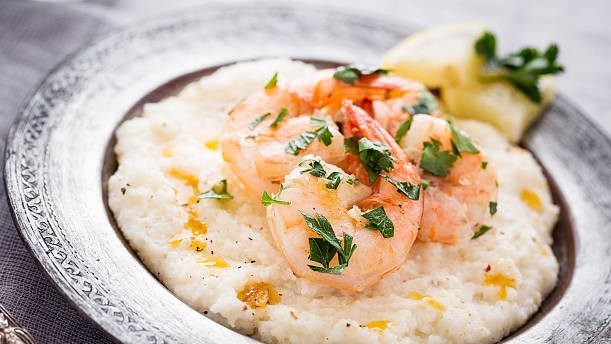Today, we are introducing a unique historical dish – grits! You would probably be thinking that the dish has some grittiness to it and will provide a satisfying meal.
Grits is a dish made from boiled processed corn. The commonly used grits are hominy grits which have the kernels removed via alkalinisation. Some would be more familiar with its yellow counterpart, polenta, but are they the same? Apparently, both are ground corn, but hominy is made of white corn while grits are much smoother with a finer texture as compared to polenta.
The History of Grits
This dish is native to Southern America and has a place in history. Evidence showed that corn has been grilled in a mill and cooked with heat and water since the 8700 B.C. The word ‘grits’ comes from ‘grytt’, an Old English word meaning coarse meal.
While it may be popular now in all parts of America, it used to be a dish that many people did not grow up with. It originated from the Native American Muskogee tribes back in the 16th Century, and they grounded dried corn in stone mills, thus, giving the dish a ‘gritty’ texture. The Muskogee tribes served it to the colonists who settled down, and they fell in love with it! The dish quickly became a common staple, and with mass productions, grits stand proud in restaurants and homes alike.
Fun Fact: South Carolina has declared grits as its official state food!
The Grit Dish
Grits is often prepared and cooked with four to five parts of water or milk. These miraculously small particles can expand about 4.25 times their original size once cooked. The cooking process is done over medium-low heat with regular stirring to prevent the grits from clumping together.
The dish is versatile and can be paired with many condiments. Most dishes are flavoury and salty. Butter is often added, and they are paired with eggs and bacon, sausages, ham and salmon croquettes.
The more popular variation is the traditional dish among South Carolina coastal communities – Shrimp and Grits. Nevertheless, some people serve the dish with sugar. It can also be chilled in a mould, sliced and sometimes breaded and fried to form ‘grit cakes’.
A Painful Slavery History
The origins of Shrimp and Grits can be pinned to the Lowcountry, where the dish was once called hominy shrimps or breakfast shrimps. As with many Southern dishes, the real story of Shrimp and Grits traced back much further to the painful slavery history.
The combination of creek shrimp and corn grits are a combination constantly in the minds of the enslaved, where these people were brought to the New World forcefully during the transatlantic slave trade.
Because many of the slave trades were in Charleston and other Southern ports, the dish got associated with the southern regions. The easily prepared meal showed that it is a reflection of a labourer’s diet. Simple staples, easy to find shellfish.
Today, Shrimp and Grits are no longer a dish of the poor but a delicacy found in Western and fusion restaurants alike. As the time came to past, it is now a dish that is savoured by all over the world. If you are looking to give this historic dish a try, do drop by any Western restaurants for many flavourful bites. Don’t forget! You can order via foodpanda too!
